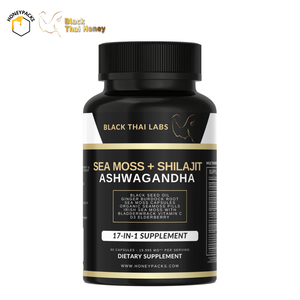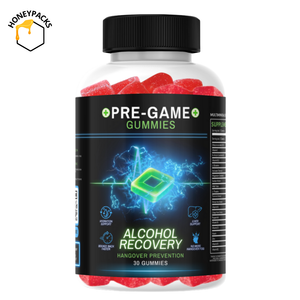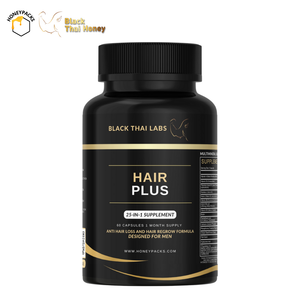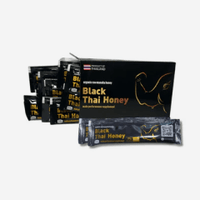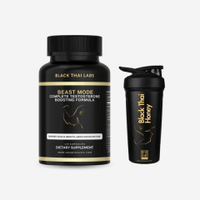Inorganic vs Organic Compounds: Key Differences Explained
Organic compounds contain carbon-hydrogen bonds and are often linked to living organisms, while inorganic compounds lack these bonds and include salts, metals, and minerals. Their bonding, solubility, reactivity, and real-world applications differ significantly.
Organic and inorganic compounds differ primarily in their structure and bonding. Organic compounds typically contain carbon-hydrogen (C-H) bonds and form complex molecular chains, while inorganic compounds do not and instead include minerals, salts, and metals with ionic or metallic bonding.
To choose the right classification and avoid confusion around compounds like CO₂ or urea, it helps to understand how each behaves, where they're found, and why some carbon-containing substances are still considered inorganic. Many students and professionals seek clarity on these differences to perform better in school, prepare for exams, or apply the right chemistry in fields like biology, material science, wellness, and industrial production.
Here’s a quick breakdown of what we’ll explore below:
- What makes a compound organic vs inorganic
- Why substances like CO₂ and carbonates are still considered inorganic
- Core differences in bonding, solubility, reactivity, and structure
- Real-world examples in biology, geology, industry, and wellness
- Why some people question whether the division is arbitrary
- A simple checklist to quickly classify compounds with confidence
Honey Packs believes that the building blocks of chemistry are closely tied to how our bodies function. Many organic molecules, like those found in black ginger, ginseng, and Butea Superba, play a direct role in circulation, energy, and hormonal support. Understanding how organic compounds behave in the body is key to unlocking natural vitality, which is why our formulations are rooted in clean organic chemistry and backed by science.
If you want the full breakdown, along with examples, clarifications, and simple rules you can apply confidently, keep reading.
What Are Organic and Inorganic Compounds?

In modern chemistry, organic compounds are generally defined as molecules that contain carbon-hydrogen (C–H) bonds, often forming complex structures such as chains, rings, or functional groups. These compounds are commonly associated with biological systems, fuels, pharmaceuticals, and polymers.
Inorganic compounds, on the other hand, typically do not contain C–H bonds and include substances like salts, metals, CO₂, minerals, acids, and bases. They are often found in the Earth’s crust or derived from non-living geological or industrial processes.
Why early chemists thought organic meant living
Historically, chemists believed that organic compounds could only be produced by living organisms through a special vital force. Everything derived from non-living sources, such as rocks or metals, was classified as inorganic. This belief held strong until the 19th century, when scientists successfully synthesized urea, a compound found in urine, from inorganic materials, proving that organic substances could be created outside living systems.
Why some carbon compounds are still inorganic
This historical shift raised a new question which is, if carbon is the defining feature, why are some carbon-containing substances still considered inorganic? Today, classification depends on structure, bonding, and chemical behavior rather than source alone.
For example:
- Carbon dioxide (CO₂) and carbon monoxide (CO) lack C–H bonds and behave more like inorganic oxides.
- Carbonates (e.g., CaCO₃) and cyanides (CN⁻) function more like minerals or ionic salts.
- Diamond and graphite are pure elemental carbon and are treated as inorganic due to their crystalline, non-molecular nature.
These exceptions often confuse students who assume carbon is organic. But modern chemistry focuses on molecular structure and bonding, not just elemental presence.
The Core Difference: Carbon-Hydrogen Bonds
The most widely used guideline in chemistry education is straightforward:
Most organic compounds contain carbon-hydrogen (C–H) bonds.
Most inorganic compounds do not.
This rule provides a quick and practical way for students and professionals to classify compounds during exams or chemical analysis. However, like many concepts in chemistry, there are important exceptions.
Widely accepted exceptions that are still considered organic:
|
Compound |
Reason it’s considered organic |
|
Urea (CO(NH₂)₂) |
Synthesized from inorganic sources but functions within biological systems |
|
Carbon tetrachloride (CCl₄) |
Carbon-based solvent widely used in organic chemistry reactions |
These compounds lack hydrogen but are still classified as organic due to their use in carbon-based reaction mechanisms and their structural similarities to traditional organic compounds.
Inorganic carbon compounds, despite containing carbon:
|
Compound Type |
Example |
Why considered inorganic |
|
Oxides |
CO₂, CO |
Lack C–H bonds and react like inorganic gases |
|
Carbonates |
CaCO₃ |
Ionic bonding and mineral origin |
|
Carbides |
SiC |
More aligned with inorganic solid-state materials |
A common point of confusion
A frequent question among students is whether carbon and hydrogen simply being present in the same molecule automatically makes it organic, or if they must be chemically bonded together. The accepted answer is that there must be a direct C–H bond or carbon-based bonding framework typical of organic molecules for classification as organic.
Classification Overview: How Chemists Decide
While the presence of carbon-hydrogen bonds is a key indicator, chemists use multiple criteria to classify a compound as organic or inorganic. These include bond types, molecular structure, chemical behavior, and source of origin.
|
Criteria |
Organic Compounds |
Inorganic Compounds |
|
Bonding |
Covalent, commonly includes C–H |
Often ionic or metallic |
|
Origin (historical) |
Initially associated with living or petroleum-based sources |
Often ionic or metallic |
|
Structure |
Complex, chain or ring-based carbon frameworks |
Typically simpler, crystalline, or lattice-based |
|
Examples of behavior |
React in carbon-based mechanisms |
React in ionic or electrostatic reactions |
What about the blurry lines?
Some compounds sit between both domains. Organometallic compounds, such as ferrocene and Grignard reagents, contain both metal atoms and carbon groups, making them essential in both organic synthesis and inorganic coordination chemistry. These hybrid compounds demonstrate that the boundary isn’t rigid, but still meaningful in practice.
Is the division arbitrary?
Some learners wonder if the classification exists only out of academic tradition. However, chemists continue to use these labels because organic and inorganic compounds behave differently in reactions, require distinct naming conventions, and are studied under different mechanistic principles. In other words, the division may have historical roots, but its continued use is grounded in real chemical differences.
Examples of Organic vs Inorganic Compounds
Identifying compounds becomes easier once you’re familiar with common examples.
Common organic compounds include:
- Methane (CH₄)
- Ethanol (C₂H₅OH)
- Glucose (C₆H₁₂O₆)
- DNA and proteins
- Hydrocarbons like propane, benzene, and octane
Common inorganic compounds include:
- Sodium chloride (NaCl)
- Carbon dioxide (CO₂)
- Sulfur and metals like iron or copper
- Minerals such as quartz and calcite
- Acids and bases like HCl and NaOH
These examples highlight both the structural complexity of many organic compounds and the ionic, crystalline nature of most inorganic ones.
Chemical Properties Compared
The differences between organic and inorganic compounds go beyond structure, they behave differently in physical and chemical environments:
|
Property |
Organic Compounds |
Inorganic Compounds |
|
Combustibility |
Often flammable due to C–H bonds |
Usually non-flammable |
|
Solubility |
Often insoluble in water; dissolve in organic solvents |
Frequently water-soluble |
|
Conductivity |
Poor conductors |
Conduct electricity in aqueous solution |
|
Conduct electricity in aqueous solution |
Generally lower |
Typically higher |
|
Reaction Rate |
Slower, specific, catalyst-dependent |
Faster, often driven by ionic forces |
Why are many organics gases/liquids while inorganics are solids?
Organic molecules often exist as covalent compounds with lower boiling and melting points, explaining why substances like ethanol or methane are liquid or gaseous. Inorganic compounds typically form strong ionic lattices, resulting in stable solids like salts and minerals.
Where You’ll Encounter Each: Everyday Life & Industry Use Cases)
Organic and inorganic compounds are deeply woven into everyday life, and knowing where each category applies helps students, professionals, and even product formulators choose the right chemical approach.
Common uses of organic compounds:
- Fuels like gasoline and natural gas
- Pharmaceuticals and supplements
- Plastics, polymers, and synthetic fibers
- Biochemical molecules involved in energy, hormones, and cell function
Common uses of inorganic compounds:
- Fertilizers rich in nitrates and phosphates
- Industrial catalysts and battery materials
- Building materials such as cement, glass, and ceramics
- Electrolyte compounds in healthcare and engineering applications
Knowing where to apply each field
- Biologists rely heavily on organic molecules linked to metabolism and genetics.
- Geologists focus more on inorganic minerals and crystal structures.
- Industrial chemists may work across both when designing catalysts or hybrid systems.
At Honey Packs, knowing these distinctions allows us to rely on safe, functional organic ingredients, like black ginger, ginseng, and Butea Superba, that interact naturally with the body’s biochemical pathways to support energy, circulation, and hormonal performance without resorting to harsh synthetic fillers.
Why the Distinction Still Matters in Modern Chemistry
While the boundary between organic and inorganic compounds has softened over time, the distinction remains a cornerstone of chemistry education and research.
In education
Teachers and students rely on the distinction to predict molecular behavior, understand naming systems, and classify reaction types. Without it, learning foundational concepts such as covalent bonding, functional groups, or acid-base reactions would be far more complex. The classification helps learners quickly identify how a compound is likely to react or behave under certain conditions.
In research
Scientists use these categories to design experiments and tailor analytical methods. Organic reactions typically involve covalent bonds and slower, more specific transformations, while inorganic reactions often rely on ionic or coordination mechanisms. From synthetic drug development to materials science, these frameworks streamline research and ensure precision.
The overlap zone
Modern chemistry acknowledges a gray area, organometallic compounds, which bridge the two worlds. These compounds contain both carbon and metal atoms, giving them properties of both categories. They’re essential in catalysis, industrial synthesis, and even biological processes. So while the lines may blur, they remain scientifically useful, much like different gears in the same machine.
Common Misconceptions and Worries
Even confident chemistry students and professionals sometimes fall into conceptual traps. Let’s clear those up.
All carbon-based compounds are organic
False. Some carbon compounds like CO₂, carbonates, and cyanides are classified as inorganic due to their bonding patterns and reactivity.
Inorganic compounds are always simple
Incorrect. Many inorganic compounds, like transition-metal complexes and silicates, are structurally intricate and form the basis of advanced materials.
If algae uses inorganic CO₂, how is it organic?
Algae and all plants convert inorganic carbon into organic molecules through photosynthesis. The CO₂ itself is inorganic, but it becomes part of organic matter through metabolic transformation.
I’ll get exam questions wrong because of exceptions
Not if you focus on the rule: compounds with carbon-hydrogen bonds are usually organic, unless the compound behaves ionically or structurally resembles a mineral. Exceptions are few, and often specifically taught to illustrate deeper understanding, not to confuse.
Final Summary: How to Quickly Identify Organic vs Inorganic Compounds
Quick Checklist for Exams or Lab Work:
- Look for C–H bonds → usually organic.
- Look for ionic or metallic bonding → likely inorganic.
- If it’s a carbon compound without hydrogen (like CO₂ or CaCO₃) → inorganic.
- Check the compound’s origin or behavior, biological and covalent vs mineral and ionic.
Honey Packs apply this same principle to its formulations. We apply clarity, precision, and respect for nature’s design. Our blends are built on organic compounds that work in harmony with the body’s chemistry, enhancing stamina, energy, and confidence naturally. Just like the difference between organic and inorganic compounds, the right structure makes all the difference.
Frequently Asked Questions
Even with clear definitions, some questions persist, especially among students navigating early chemistry courses. Here are a few clarifications:
Was water ever considered organic?
No. Water (H₂O) lacks carbon altogether, so it has always been considered inorganic despite its role in sustaining life.
Where do organometallic compounds fit?
Organometallics belong in the overlap. They contain both metal atoms and organic ligands, combining properties of both chemistry branches. Think of them as “dual citizens” that bridge reactivity between organic molecules and inorganic frameworks.
At what point does a carbon-based molecule become alive?
Life isn’t defined by chemical composition alone. While organic molecules form the basis of life, living systems require organization, metabolism, and reproduction, traits that simple organic compounds don’t possess.
Why not classify based on nitrogen or oxygen instead?
While many important molecules contain nitrogen or oxygen, carbon’s ability to form four bonds and complex chains makes it the logical anchor of organic chemistry. It’s this versatility, not abundance, that makes carbon unique.

